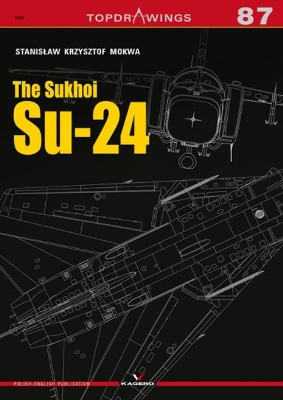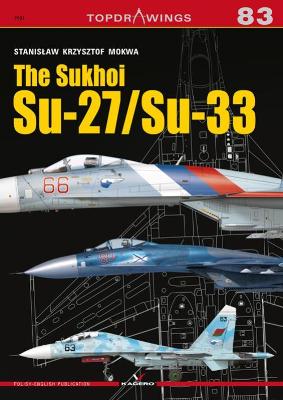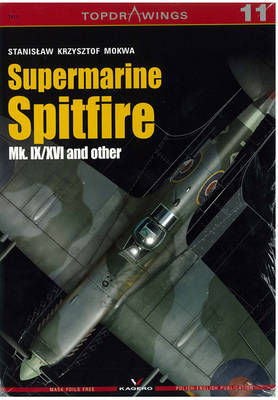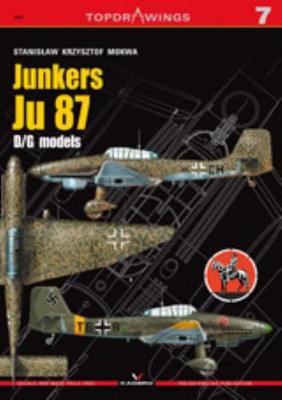Top Drawings
5 total works
Su-24 (Fencer) is a Soviet jet bomber with variable-geometry wings. The aircraft was supposed to be a response to the American F-111, and therefore it’s structurally similar. Su-24 can operate in any weather conditions, also at night. It was designed to carry tactical nuclear weapons.
In the 1960s, the military command of the Soviet Union set requirements for a new attack aircraft that would be able to operate despite strong ant-aircraft defense of NATO troops. An aircraft was expected to fly on a very low altitude at a very high speed. Initially, it was based on Su-7 and Su-15 airframes, but due to the decision to use variable-geometry wing, it was necessary to build a completely new structure. Variable geometry allowed to achieve high speeds while maintaining good takeoff and landing characteristics. This is how Su-24 was born.
The first prototype was flown on July 2, 1967 (marked as T6-1), and the second on January 17, 1970 (T6-2I). Variable-geometry wings were only used in the second prototype. In December 1971, the first serial Su-24 was built, but due to the prolonged acceptance tests (lasting until 1974), the aircraft officially did not become operational until February 1975. Su-24 was named Fencer in the NATO code.
In the 1960s, the military command of the Soviet Union set requirements for a new attack aircraft that would be able to operate despite strong ant-aircraft defense of NATO troops. An aircraft was expected to fly on a very low altitude at a very high speed. Initially, it was based on Su-7 and Su-15 airframes, but due to the decision to use variable-geometry wing, it was necessary to build a completely new structure. Variable geometry allowed to achieve high speeds while maintaining good takeoff and landing characteristics. This is how Su-24 was born.
The first prototype was flown on July 2, 1967 (marked as T6-1), and the second on January 17, 1970 (T6-2I). Variable-geometry wings were only used in the second prototype. In December 1971, the first serial Su-24 was built, but due to the prolonged acceptance tests (lasting until 1974), the aircraft officially did not become operational until February 1975. Su-24 was named Fencer in the NATO code.
The Kawasaki Ki-61 Hien (flying swallow) was designed to use the licensed copy of the German Daimler-Benz 601 engine, manufactured in Japan as Ha-40 by Kawasaki’s Akashi motor plant. It was planned to create two airframes – a heavily armed Ki-60 intended for offensive operations at low and medium ceilings, as well as a more agile and lightly armed Ki-61.
Although the construction of the Ki-60 was considered a priority and work on it started a few months earlier, the Ki-61 contained the conclusions from the unsuccessful Ki-60 tests. Ultimately, the younger fighter entered the service.
The Ki-61 engine mounting was constructed as an integral part of the fuselage, so it was only possible to remove the top and bottom covers, which was quite an unique solution. There were ammunition boxes behind the engine firewall for two 12.7 mm Ho-103 machine guns. It was a relatively light weapon, but very fast-firing. The supply of ammunition was only 250 rounds for a barell. The weaponry was supplemented by a pair of wing machine guns or cannons (depending on the version). The pilot was protected by an armoured windscreen and a 13 mm thick steel plate behind the seat. The engine and oil radiators were placed under the fuselage.
Although the construction of the Ki-60 was considered a priority and work on it started a few months earlier, the Ki-61 contained the conclusions from the unsuccessful Ki-60 tests. Ultimately, the younger fighter entered the service.
The Ki-61 engine mounting was constructed as an integral part of the fuselage, so it was only possible to remove the top and bottom covers, which was quite an unique solution. There were ammunition boxes behind the engine firewall for two 12.7 mm Ho-103 machine guns. It was a relatively light weapon, but very fast-firing. The supply of ammunition was only 250 rounds for a barell. The weaponry was supplemented by a pair of wing machine guns or cannons (depending on the version). The pilot was protected by an armoured windscreen and a 13 mm thick steel plate behind the seat. The engine and oil radiators were placed under the fuselage.
In the late 1960s Soviet Union started working on fighters that would be a counterbalance for the American F-15 Eagle. In 1969, a competition for a new fighter was announced, but when the parameters to be met were given, Pavel Sukhoi withdrew from it. He considered that the required performance could not be reached.
Despite this, the designers from his office – Oleg Samojtowicz, Valery Nikolaenko and Vladimir Antonov – developed the plane and presented it for the competition as T-10 protoype. The aircraft was constructed as a heavy interceptor fighter (light version was the MiG-29, which was submitted in the same competition).
Despite this, the designers from his office – Oleg Samojtowicz, Valery Nikolaenko and Vladimir Antonov – developed the plane and presented it for the competition as T-10 protoype. The aircraft was constructed as a heavy interceptor fighter (light version was the MiG-29, which was submitted in the same competition).
The Supermarine Spitfire was indeed a remarkable aircraft. It was already a legend in the making when the first Mk I machines began to roll off the assembly lines. The Spitfire was one of the classic British fighters in which the famous few bravely faced the mighty Luftwaffe.
Although the Messerschmitt Bf 109 was considered superior in certain areas of flight performance, it was the Spitfire that eventually prevailed and helped crush the numerically superior enemy.
In this book the reader will find clearly marked areas of skin sections where flush riveting was used. The Spitfire Mk. IXs, as well as other models of the fighter, were often assembled using a variety of parts, including those originally designed for earlier versions of the fighter.
About Top Drawings
This series of highly illustrated books present detailed scale drawings of aircraft and vehicles, with supporting colour profile artwork. With detailed captions on the history, combat action and development of each machine, each volume is an exceptional reference tool for modellers.
Although the Messerschmitt Bf 109 was considered superior in certain areas of flight performance, it was the Spitfire that eventually prevailed and helped crush the numerically superior enemy.
In this book the reader will find clearly marked areas of skin sections where flush riveting was used. The Spitfire Mk. IXs, as well as other models of the fighter, were often assembled using a variety of parts, including those originally designed for earlier versions of the fighter.
About Top Drawings
This series of highly illustrated books present detailed scale drawings of aircraft and vehicles, with supporting colour profile artwork. With detailed captions on the history, combat action and development of each machine, each volume is an exceptional reference tool for modellers.
The Junkers Ju 87 or Stuka (from Sturzkampfflugzeug, "dive bomber") was a two-seat (pilot and rear gunner) German ground-attack aircraft. Designed by Hermann Pohlmann, the Stuka first flew in 1935 and made its combat debut in 1936 as part of the Luftwaffe's Condor Legion during the Spanish Civil War.
The D-series saw extensive use in the Eastern Front and the Middle East. With the G variant the aging airframe of the Ju 87 found new life as an anti-tank aircraft. This was the final operational A-T version of the Stuka and was deployed on the Eastern Front. The change in German military fortunes after 1943 and the appearance of huge numbers of well armoured Soviet tanks caused Junkers to adapt the existing design to combat this new threat.
This is a detailed technical guide to these formidable variants, and provides exceptional reference for any modeller or enthusiast.
About the Series
This series of highly illustrated books presents detailed scale drawings of aircraft and vehicles, with supporting colour profile artwork. With detailed captions on the history, combat action and development of each machine, each volume is an exceptional reference tool for modellers, with extras such as free decals, masking foil and photo-etched brass.
The D-series saw extensive use in the Eastern Front and the Middle East. With the G variant the aging airframe of the Ju 87 found new life as an anti-tank aircraft. This was the final operational A-T version of the Stuka and was deployed on the Eastern Front. The change in German military fortunes after 1943 and the appearance of huge numbers of well armoured Soviet tanks caused Junkers to adapt the existing design to combat this new threat.
This is a detailed technical guide to these formidable variants, and provides exceptional reference for any modeller or enthusiast.
About the Series
This series of highly illustrated books presents detailed scale drawings of aircraft and vehicles, with supporting colour profile artwork. With detailed captions on the history, combat action and development of each machine, each volume is an exceptional reference tool for modellers, with extras such as free decals, masking foil and photo-etched brass.




